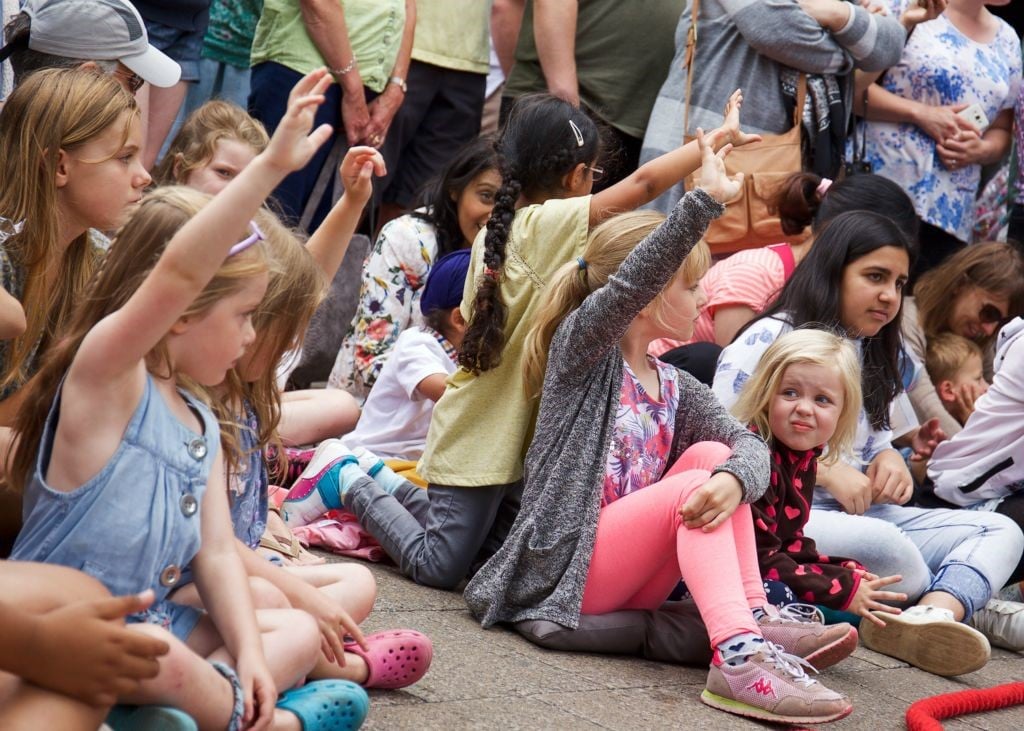
Birmingham Hippodrome's Summer in Southside
Valuable visitor data
As many organisers of outdoor arts events have a love–hate relationship with collecting data from visitors, Vishalakshi Roy offers some advice on how to make it a more positive experience.
It’s not surprising that festival or outdoor event organisers exhibit deep-rooted apprehensions about the process of visitor research activity. Many organisers see questioning a visitor about their experience (and in most cases about themselves) as intrusive. But there is also a belief that the level and depth of information being requested is not useful and that the activity is carried out purely to meet an external priority.
Different priorities
Funders of outdoor activities are generally interested in numbers of visitors and demographic information such as age, gender, diversity and socioeconomic distribution. They also want to know how successful the event was at bringing new people to the area and its economic impact.
An honest and objective review of requirements and brave conversations are needed between organisers and their funders
Understanding what is relevant to visitors helps organisers inform programming and curate better events in the future. So while profile and reach are of interest to organisers, they primarily want more qualitative information from visitors, such as the social impact and visitor satisfaction.
The difference in data collection priorities is not simply a qualitative versus quantitative debate, as one of the shared areas of interest for organisers and funders is whether the event has reached individuals who do not normally engage with culture. But even here, opinions differ on how much information is needed from visitors, sample size and how it should be collected (the data collection mechanisms used).
The use of surveys
Self-completion surveys are still the dominant method of collecting data from visitors. Despite the obvious issues of using paper surveys at outdoor locations, they are recognised as the simplest mechanism for collecting data. A move away from paper surveys to online (post-event surveys) and digital surveys (available on tablets or kiosks) is also evident.
Additionally, employing interviewers at events is seen as an effective way not just for collecting information but for selecting a representative sample of visitors that provide the information. Graham Callister, Creative Programme Director at Birmingham Hippodrome, said: “Face-to-face surveys are more accurate and provide detailed data, but it would be good to have effective alternative methods.”
Qualitative data issues
Creative methods of data collection, including participatory activities with visitors to understand the impact of these events, are growing in popularity. There is some confusion, however, about whether creative (and in essence) qualitative methods can provide robust evidence of the impact of these events on the overall visitor base rather than on just a few specific individuals.
Much of this is due to the lack of understanding of when and how qualitative data collection methods are effective and how the data can be analysed. Some qualitative methods are used for how attractive the output appears rather than for the value it offers in understanding impacts. This, along with a few other reasons related to the systematic analysis of qualitative information, has led to a distrust of impact findings based purely on qualitative information.
A mixed method approach
Although surveys are seen as a safe method of data collection, outdoor festival organisers are identifying the need for mixed methods of gathering evidence where possible, to arrive at the best quality of information and to fulfil all priorities.
Parminder Dosanjh, Artistic Director of Creative Black Country, said: “Talking to people directly, having a conversation and verbal feedback always feels the most authentic. With outdoor and festival work in particular, gathering feedback in a number of ways has proved to be more fruitful.”
Although mixed methods will probably help address the differing priorities more holistically, managing such projects has resource and skill implications that need to be identified and addressed. Equally, an honest and objective review of requirements and brave conversations are needed between organisers and their funders and partners to understand what is possible with limited budgets and within an outdoor event format.
Collecting what you need
In summary, the main area to address before gathering data is to work out what information is needed and how it will be used. Do not commit to gathering more data than you have the resources for or that might end up not being useful.
Any data collection exercise must be carried out in the most appropriate manner, allocating appropriate time and personnel to the job with a clear focus on how much data is necessary and how it can be turned into knowledge to inform decisions in the most relevant timeframe. The choice of methodology needs to follow the objectives of the research, as some methods may look interesting but do not even start to address the question at hand.
Vishalakshi Roy is Director of Earthen Lamp.
www.earthenlamp.com
Join the Discussion
You must be logged in to post a comment.